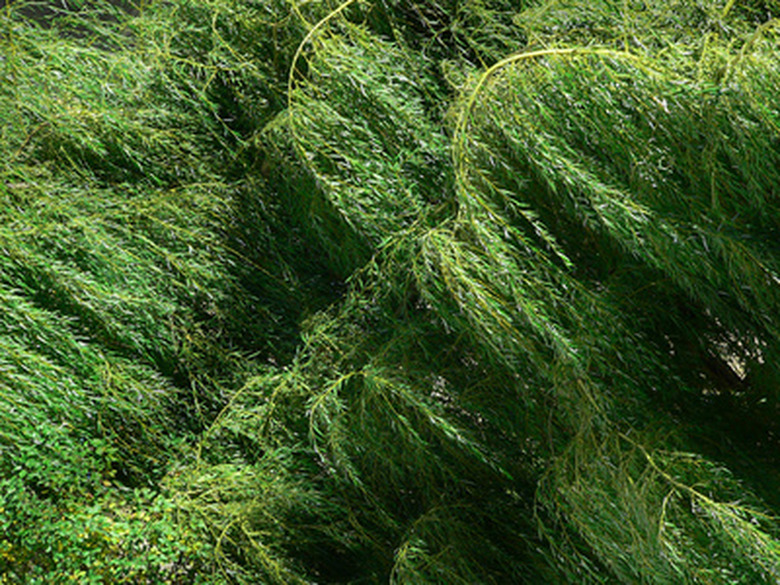Weeping Willow Root Rot Identification
One of the most common ailments of weeping willow trees is root rot. This infection is also the most serious ailment, because it can kill the host tree quickly if not treated. Pruning and removal of dead trees is the only method to treat this problem. With proper and timely identification, root rot in weeping willow trees can be effectively controlled.
Identification
Root rot is the result of pathogens entering the root system of the willow tree. This often happens when the soil is disturbed or the trunk is damaged near the base. Phymatotrichum omnivorum, more commonly known as Cotton Root Rot, is the most common pathogen to infect weeping willow trees.
- One of the most common ailments of weeping willow trees is root rot.
- This infection is also the most serious ailment, because it can kill the host tree quickly if not treated.
Types
There are two types of pathogens that can cause root rot in weeping willow trees; one is a fungus, the other is a bacterium. The fungus is called Fusicladium saliciperdum and is one of the more serious root infections; this fungus is commonly known as willow scab. The bacteria is known as crown gall. If these two are found on a willow tree at the same time the common disease is called willow blight.
Symptoms
The signs and symptoms of root rot in willow trees are varied and can be mistaken for other infections. Willow scab shows as oddly-shaped brown spots on leaves; these become more prevalent during damp and wet conditions. As the fungus spreads, the brown spots turn green; this is a sign of spores beginning to spread. Crown gall can be identified by the tumors forming on the roots, stems or branches of the willow tree; the tumors will eventually overrun an infected area if left untreated. Leaves will begin to turn color from green to yellow, then tan to brown; this starts at the upper canopy with the leaves farthest from the roots. Root bark will take on brown coloration; fungal spores will form as bronze colored stringy hair from the bark. Root bark will tear and slide off as the roots rot; the inner bark becomes slick and gummy. White threaded mats under the bark begin to form.
- There are two types of pathogens that can cause root rot in weeping willow trees; one is a fungus, the other is a bacterium.
- Root bark will take on brown coloration; fungal spores will form as bronze colored stringy hair from the bark.
Causes
Root rot is caused by physical damage to the root system or to the trunk. Excess moisture allowed into the tree through the bark allows pathogens to enter the tree. Soft, depressed, discolored areas are where pathogens have entered. Damage to the trunk or roots by lawn maintenance equipment is a more common cause.
Time Frame
Root rot identification can be best accomplished during the summer and early autumn; this is high point of infection when soil temperatures are above 82 degrees. Once the upper canopy begins to discolor, the leaves can begin to wilt within 48 hours. Within 72 hours the lower leaves begin to wilt. Within four days the wilted leaves will start to die off; dead leaves of an infected weeping willow tree will remain attached to the tree. The tree will begin to dry out and can die within one season. The fungus causing Cotton Root Rot remains in the soil for many years after the infected tree has died.
- Root rot is caused by physical damage to the root system or to the trunk.
- Within four days the wilted leaves will start to die off; dead leaves of an infected weeping willow tree will remain attached to the tree.
